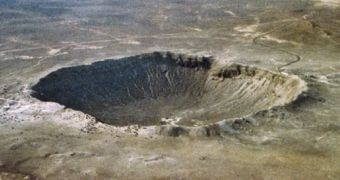Most certainly, when the topic of destroying potentially hazardous asteroids that could reach a collision course with the Earth comes into question, almost everybody thinks of the 1998 movie "Armageddon," in which Bruce Willis and Ben Affleck saved the planet from one. Or at least Phil Plait's recent book, "Death from the Skies!". Still, the movie did not provide an accurate solution to the planet-threatening issue, claim experts.
Nevertheless, astrophysics scientists concur on the fact that the most logical approach for sidestepping the imminent impact that would most likely obliterate humankind is shifting the direction of the asteroid. How this should be done, however, is not so obvious. A doctoral student by the name of David Polishook, together with his supervisor, Dr. Noah Brosch from the Department of Geophysics and Planetary Sciences at the Tel Aviv University, two of the very few researchers who study asteroid composition, explain the difficulties.
"For that to work, we need to be able to predict what would happen if we attempt an explosion," states Polishook, as quoted by Eurekalert. Determining the composition of an asteroid is crucial if an attempt of altering its course or even blasting it apart is ever to be made. Otherwise, it could just be divided into more pieces 100 meters in diameter, twice the size of the one that formed the Arizona crater. "Science needs to know whether asteroids are solid pieces of rock or piles of gravel, what forces are holding them together, and how they will break apart if bombed," adds Polishook.
The variations in an asteroid's brightness provide reliable hints about its composition, speed, rotation rate and shape. "This is a good way of evaluating what asteroids are made of," reveals Polishook. The team believes an important factor that should be considered in such a worst case scenario is the Yarkovsky-O'Keefe-Radzievskii-Paddack (YORP) effect, which shows that the acceleration and rotation are affected by sunlight, and if it determines an asteroid to spin faster than a revolution per 2.2 hours, it will disintegrate. While this piece of information is crucial, let's just hope we'll never need to use it.

 14 DAY TRIAL //
14 DAY TRIAL //